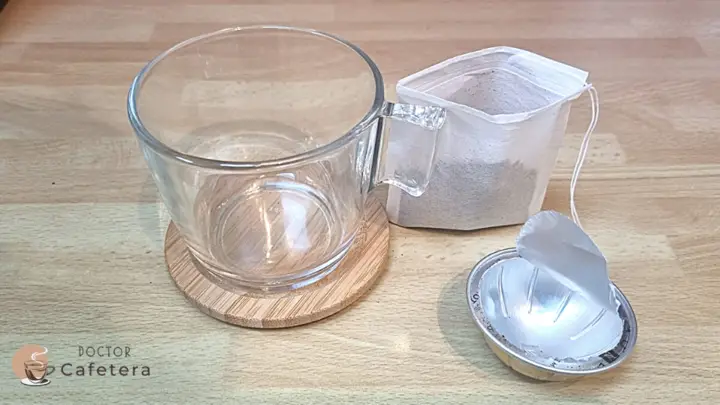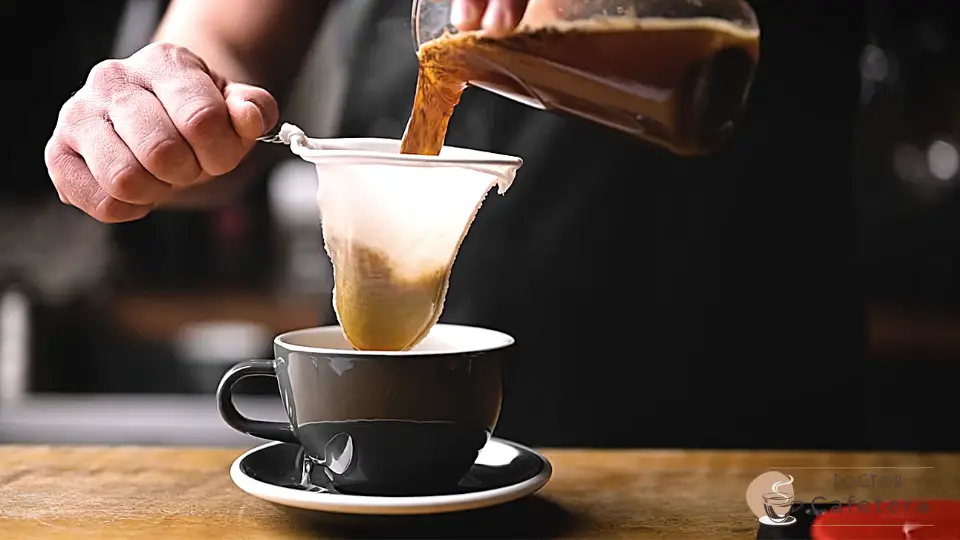Why would anyone want to prepare coffee with coffee pods without a machine? Although some people have told me this proposal is crazy, many others have thanked me for the ideas I propose to take advantage of coffee pods without a machine.
The main reasons for making coffee pods without a coffee machine are as follows:
- To use those deformed pods that do not fit into the coffee machine.
- To take advantage of the coffee pods when the machine breaks down.
- If we make a mistake and buy pods that are not suitable for our coffee machine.
- Experiment and not limit ourselves to a specific brand of coffee machines.
Whatever your reason for wanting to use a coffee pod without a machine, I will explain the four (plus one) possibilities you have. In short, the coffee is already ground; you need to extract it with hot water, right? Well, it won’t be as simple as it sounds.
My reason for preparing coffee from coffee pods without a machine
Today I have both Nespresso OriginalLine and VertuoLine coffee makers, but there was a time when I only had a Nespresso Citiz. It turns out that while looking for the best deal on coffee pods, I made a mistake and ordered pods from VertuoLine instead of the OriginalLine.
I didn’t realize the mistake until the pods arrived home. That’s when I wrote to Nespresso asking for an exchange or refund to buy the proper pods. However, this is what I got back from Nespresso:
Good morning Mr. Barrantes,
I am sorry to hear that you have ordered the wrong coffee coffee pods for your coffee maker, I understand this is disappointing.
We do not accept the return of coffee once delivered, as it is a food and beverage item and cannot be resold. As a gesture of goodwill, I have requested a refund for you. We will return the original payment amount within 14 working days. Please give away the coffee you have, if possible, to a friend or family member to avoid waste with our compliments, alternatively, you can return the coffee pods in your recycling bags.
We apologize for the inconvenience caused and wish you a good day.
Kind regards,
Hayley C, Nespresso Uk
This meant I had 100 useless coffee pods for myself and no one I knew to give them to. So I took the opportunity to test and share my experience with you.
My 4 favorite ways (+ one) to brew coffee from coffee pods without a machine
Coffee pod machines use a percolation method to extract the coffee. They pass hot water under pressure through the ground coffee and thus extract all the soluble materials from the coffee. This is important to remember when looking for the ideal method without a machine to make the necessary adjustments.
Below you will see two alternative percolation methods and three immersion methods. We will only obtain the same result as with the machine in one of them, but at least we can take advantage of that coffee in all of them.
Method 1. Using a refillable pod in another coffee maker
This is the “extra method” I mentioned above. It is extra because we need a coffee pod machine. Therefore, it is only useful for those who, like me, made a mistake when buying the pods or they are damaged.
The good thing about this method is that the coffee will taste exactly as it should. You only have to remove the coffee from the pod you cannot use, compact it in the refillable coffee pod, and use it in your coffee maker.
For most brands of coffee makers, we find refillable pods for less than 10 dollars, so for a little more, you won’t waste those pods.
It would be this if I had to choose the best of the five methods.
Method 2. Using a moka pot to prepare coffee from coffee pods
The moka pot, like the coffee pod machine, uses percolation to extract the coffee; however, there are two main differences:
- The biggest difference is in the pressure we get with the Moka pot, which barely reaches 2 bars, for the 19 of the coffee pod machine.
- As the pressure is lower, the grind used for the Moka pot must be coarser.
When using a Moka pot, I always recommend a slow extraction with the stove at its lowest heat; however, as the coffee inside the pod is very finely ground, we need to make a very fast extraction.
⚠️ No matter how you do it, the result will always be an over-extracted coffee since the grinding of coffee inside pods is too fine; the coffee will be full-bodied but too bitter. This is the least recommended method of the five.
Step by step:
- Boil water in a pot and add this hot water to the reservoir of the Moka pot.
- Add coffee from a minimum of two pods to fill the filter basket.
- Close the coffee maker and place it on the stove at the highest heat.
- Once the coffee spout stops, remove the coffee maker from the stove.
- Serve the coffee.
Method 3. Using tea bags to prepare coffee from pods
This method is affordable for everyone since we only need some refillable paper or cloth tea bags. In this case, you can use a single pod and put the coffee inside the bag, sealing it very well.
Boil water and pour it into a cup. Now immerse your tea bag for no more than a minute, stirring with a spoon to properly extract the coffee.
Of course, the flavor of the coffee we obtain differs from the one we would have with the coffee pod machine. However, this coffee will not be over-extracted if we do not submerge the tea bag for too long.
Adjust the time depending on the coffee pod you use; in some cases, you will submerge it for less than 1 minute (dark roast), and others for more (medium roast).
Apart from the refillable coffee pod method, this is the one that offers the best results.
Method 4. Using a french press to prepare coffee from pods
As with the tea bags, this is an immersion method. However, this method is a little more complicated than the previous one since the coffee is not enclosed in bags but loose and will tend to be easily over-extracted.
To prepare coffee with the French press, you must first pour the ground coffee at the bottom and then add the hot water stirring well. Once you place the piston, we used to wait 4 minutes before lowering it (with coarse grind), but now as the grind is very fine, just 1 minute will be enough.
Method 5. Using a cloth filter to prepare coffee from coffee pods
I have already written an exclusive article on this method, which you can consult here. However, when using coffee from pods, we return to the same problem of too fine a grind.
We used a medium/coarse grind coffee for the cloth filter method, so now the time we perform the immersion will be less than approx. Immersion will be less than approximately 1 minute.
Place the coffee pods in a container, add the hot water, stir well, and let infuse for 1 minute. Pass this mixture of water and coffee through the cloth filter directly into the cup, and you will have your coffee drink ready.
Can I consider coffee from a pod without a machine as espresso?
The coffee inside a coffee pod is normally blended, roasted, and ground mainly to make espresso. The exceptions are found in brands such as Dolce Gusto, Tassimo, or Senseo that make pods for cappuccino, lattes, etc. But, as a general rule, the coffee inside a pod can be classified as espresso coffee.
However, a coffee that is considered espresso must have been prepared with hot water and a pressure greater than 9 bars.
In summary, even if a pod indicates espresso coffee inside, it is indispensable that this coffee is prepared at a high temperature and pressure. Otherwise, it will be considered infused coffee. And the four methods we have seen above prepare infused coffee except for the method in which we used refillable pods.


